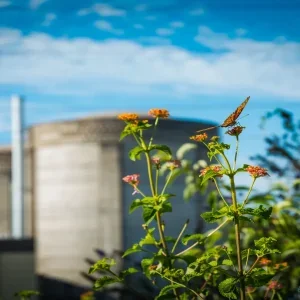
Since ancient times, hydropower is being used for irrigation and to run various mechanical devices. In late 19th century, it emerged as a promising source of renewable energy. Though it is expensive to construct hydropower plants, operational costs are usually low as they do not use any fuel like in the case of thermal or nuclear power plants. Hydroelectricity is now one of the most widely-used renewable energy sources, contributing significantly to the power mix across the world.
Here is the list of world’s largest hydroelectric power plants:
Three Gorges, China: Located in Yichang, Hubei province, China, the 22.5GW Three Gorges hydroelectric power plant is the largest hydropower station in the world. It is owned and operated by China Three Gorges Corporation through its subsidiary China Yangtze Power. Built with a cost of CNY203bn ($29bn), the plant’s construction was carried out between 1993 and 2012. It comprises 32 turbine / generator units rated 700MW each, and two 50MW power generators. While the first 700MW unit was completed in July 2003, the final one was installed in 2012. With an estimated annual power output of 85TWh, the hydropower plants supplies electricity to nine provinces and two cities in China, including Shanghai.

Image: The Three Gorges Dam on the Yangtze River, China. Photo courtesy of Source file: Le Grand Portage, Derivative work: Rehman/Wikipedia.
Itaipu, Brazil & Paraguay: The 14GW Itaipu hydroelectric power plant is the world’s second largest hydropower plant, located in on the Parana River, at the border between Brazil and Paraguay. Operated by Itaipu Binacional, it was build with a cost of $19.6bn. The construction of the facility was carried out between 1975 and 1982. It was built by a consortium of US-based IECO and Italy-based ELC Electroconsult. The hydropower plant started generation electricity in May 1984. It consists of 20 generating units with a capacity of 700MW each.
Xiluodu Dam, China: Located in China’s Jinsha River Valley, between the counties of Leibo and Yongshan, in Sichuan and Yunnan provinces, the 13.9GW Xiluodu Dam is the world’s third largest hydropower station. The plant includes a dam, an underground power generation unit and a flood discharge structure. It features 18 Francis turbine-generators of 770MW each and an air-cooled generator with 855.6MVA output. The Xiluodu plant generates 64 billion kWh of electricity annually and offsets approximately 150 million tonnes of carbon dioxide emissions per year.
Guri, Venezuela: With an installed capacity of 10.2GW, the Guri power project is located on the Caroni River in the Bolívar State of southeastern Venezuela. The world’s fourth biggest hydroelectric power station is also called as the Simón Bolívar hydroelectric power station. It is owned and operated by CVG Electrification del Caroni. The power plant features 20 generating units with capacities ranging between 130MW and 770MW. In August 2015, the Venezuelan Government selected Saab Seaeye’s Falcon remotely operated vehicle (ROV) for vital inspection work and detailed survey of infrastructure at the Guri hydroelectric power plant and associated turbines. The selection was part of the 30-year life extension project at the power plant, which was built 100km upstream of the Caroni River in Necuima Canyon in Orinoco.
Image: Panoramic view of the 10000MW Guri Dam in Venezuela, also called “Simón Bolívar”. Photo courtesy of Davidush/Wikipedia.
Tucuruí, Brazil: Located on the lower Tocantins River in Tucuruí, Pará, Brazil, the Tucuruí Hydropower Complex has a installed capacity of 8,370MW. The plant, which was constructed with a cost of $5.5bn, has been generating power since 1984. A concrete gravity dam 78m in height and 12,500m in length was constructed for the project. Construction of the plant was carried out in two phases. While the first phase was completed in 1984, the second phase was finished in late 2010. The second phase involved installation of 11 generating units with 370MW capacity each. The power station supplies electricity to the Belém town and the surrounding area.
Grand Coulee, US: The 6.81GW Grand Coulee hydropower project located on the Columbia River in Washington. It is owned and operated by the US Bureau of Reclamation. With an annual generating capacity of over 24TWh, the hydropower plant started its operations in 1941. It features three power plants and a concrete gravity dam 168m high and 1,592m in length. A total of 18 Francis turbines rated 125MW and three 10MW additional units were installed at the Grand Coulee hydro-power station.

Image: Grand Coulee Dam. Photo courtesy of U.S. Bureau of Reclamation/Wikipedia.
Sayano-Shushenskaya, Russia: Located on the Yenisei River in Sayanogorsk, Khakassia, Russia, the Sayano-Shushenskaya hydropower plant is operated by RusHydro and has an installed capacity of 6,400MW. Construction of the power station was carried out between 1963 and 1978. Generating 23.5TWh of energy annually, the plant features 10 Francis generating units with a capacity of 640MW each. Following an accident that resulted in damage to nine to 10 turbines at the plant, it was shut down in 2009 and reopened in 2010.







